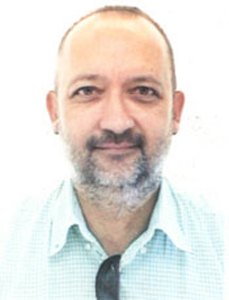Program Information
Research and Relevance of Brachytherapy Dose Calculation Advancements

M Rivard
G Ibbott
F Ballester
A Carlsson Tedgren
F Mourtada
MJ Rivard1, G S Ibbott2*, F Ballester3*, A Carlsson Tedgren4*, F Mourtada5*, (1) Tufts University School of Medicine, Boston, MA, (2) UT MD Anderson Cancer Center, Houston, TX, (3) University of Valencia, Burjassot, Spain, (4) Linkoping Univ, Linkoping, Sweden, (5) Christiana Care Hospital, Newark, DE
WE-C-141-1 Wednesday 10:30AM - 12:30PM Room: 141Research and Relevance of Brachytherapy Dose Calculation Advancements
Organizer: Mark J. Rivard
Moderator: Geoffrey S. Ibbott
Speakers: Facundo Ballester, Asa Carlsson Tedgren, Firas Mourtada
Brachytherapy dosimetry is undergoing a renaissance with the scrutiny of the AAPM TG-43 dose calculation formalism and comparisons with alternate approaches such as the Monte Carlo method, the grid-based Boltzmann solvers, and the collapsed-cone technique. Treatment planning systems (TPS) using these more advanced, model-based dose calculation algorithms (MBDCAs) are now available for clinical use. However, their accuracy and the preferred method for their use have not been established. Thus, it is important for smooth integration of new radiotherapy technology to not interrupt the cohesion of the current paradigm. Consequently, the AAPM, the European Society for Radiation Oncology (ESTRO), and the Australasian Brachytherapy Group (ABG) have forged an alliance to establish clinical benchmark cases for medical physicists to evaluate the TPS that incorporate MBDCA as the dose engine for brachytherapy. This is one charge of the Model Based Dose Calculation Algorithms in Brachytherapy working group. In support of these efforts, comparisons for several MBDCAs are underway and benchmark cases are being prepared. The learning objectives for this AAPM Research Symposium include:
1) presentation on the background and rationale for MBDCA,
2) quantitative comparisons amongst the MBDCA techniques, and
3) the current status of the benchmark cases with plans for availability to the medical physics community.
Contact Email:





